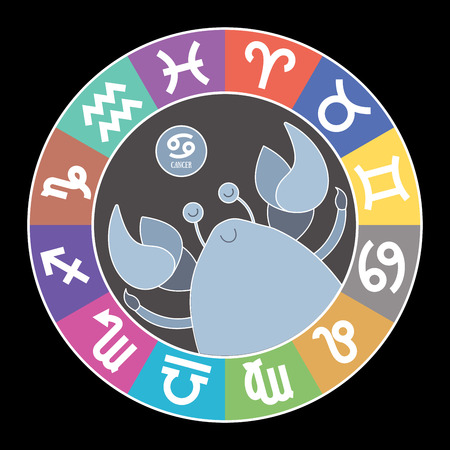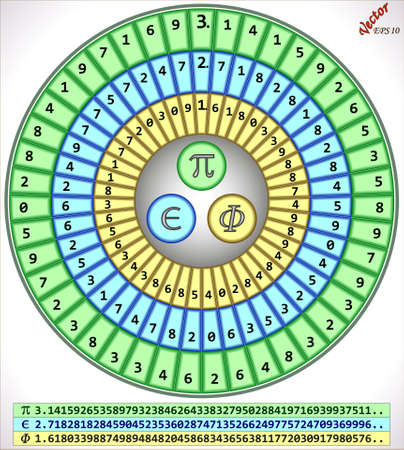1. Early Beginnings: The Roots of Tarot and Oracle Cards
Tarot and oracle cards are now popular tools for self-reflection and spiritual guidance in the United States, but their journey started centuries ago across different cultures. To understand how these decks became what we know today, let’s explore their earliest roots in Europe, Asia, and the Middle East.
Ancient Card Games and Divination
The story of tarot and oracle cards begins with simple playing cards used for games rather than fortune-telling. These card games appeared in China as early as the 9th century AD, spreading westward through trade routes to Persia (modern-day Iran) and then into Egypt. By the 14th century, playing cards had made their way to Europe via Italy and Spain.
Early Card Use Across Cultures
| Region | Time Period | Main Use of Cards | Cultural Influence |
|---|---|---|---|
| China | 9th-12th Century | Games, social entertainment | Invention of paper; early card decks like “leaf” cards |
| Middle East (Persia/Egypt) | 12th-14th Century | Games, gambling | Cards called “Mamluk”; introduced new suits and designs |
| Europe (Italy/Spain) | 14th-15th Century | Games, later divination | Brought structured decks (suits, court cards); foundation for tarot development |
From Games to Mysticism
The transformation from card games to mystical tools happened slowly. In Europe during the Renaissance, Italian nobles began using special playing cards known as “tarocchi” for both amusement and storytelling. Over time, these decks picked up symbolic images that reflected mythological, religious, and even astrological ideas.
The Rise of Tarot in Europe
The earliest tarot decks—like the Visconti-Sforza deck from 15th-century Italy—were beautifully illustrated and hand-painted. They were not originally intended for divination but eventually became associated with fortune-telling by the 18th century in France. Meanwhile, other cultures developed their own styles of oracle cards with unique symbols and meanings inspired by local beliefs.
A Multicultural Journey
The evolution of tarot and oracle cards highlights a fascinating blend of cultural exchange. The basic concept traveled from East to West, picking up new layers of meaning along the way. This journey set the stage for the diverse card decks we use today in America—from classic Rider-Waite tarot to modern oracle sets featuring everything from angels to animal guides.
2. The Evolution of Tarot: From Playing Cards to Divination
Tarot cards have a fascinating journey that stretches across centuries and cultures. Originally, tarot decks were not mysterious tools for fortune-telling but rather used as playing cards in Europe, much like how Americans play poker or bridge today. Their transformation into spiritual and personal guidance tools began during the Renaissance period and continued to develop over time.
The Early Days: Playing Cards in Europe
Tarot cards first appeared in Italy in the 15th century. These early decks, known as “carte da trionfi,” were designed for a trick-taking game called tarocchi. The decks included four suits—similar to hearts, clubs, spades, and diamonds—with added illustrated trump cards called the Major Arcana. Here’s a quick look at the differences:
| Feature | Early Tarot (Playing Cards) | Modern Tarot (Divination) |
|---|---|---|
| Main Use | Card Games | Spiritual Insight & Guidance |
| Deck Structure | Four Suits + Trumps (Major Arcana) | Same Structure, New Meanings |
| Cultural Role | Social Entertainment | Personal Growth & Reflection |
The Renaissance Shift: More Than Just a Game
During the Renaissance, people became more interested in mysticism, philosophy, and the search for deeper meaning in life. Tarot cards started to be seen as more than just a pastime—they became tools for exploring life’s big questions. Artists and scholars began adding symbolic imagery and assigning meanings to each card, laying the groundwork for tarot’s use in divination.
The Spread of Tarot Across Cultures
As tarot spread beyond Italy, different countries put their own spin on the cards. In France, tarot was used both for gaming and for occult practices. In England and America, tarot became especially popular in the late 19th and early 20th centuries when spiritual movements like Theosophy and the Hermetic Order of the Golden Dawn embraced them as instruments of self-discovery and intuition.
Key Milestones in Tarot Evolution
| Time Period | Cultural Influence | Main Development |
|---|---|---|
| 15th Century Italy | Nobility & Artists | Creation of the first tarot decks for games |
| 18th Century France | Mystics & Occultists | First use of tarot for fortune-telling and symbolism assigned to cards |
| Late 19th–20th Century America & England | Spiritual Seekers & New Age Movements | Tarot becomes a popular tool for personal insight and growth; Rider-Waite deck published in 1909 sets modern standard |
A Modern Take: Tarot Today in American Culture
Today, tarot is widely embraced in American culture not just as a mystical practice but also as a way to reflect on personal goals, relationships, and challenges. People often use tarot readings as a form of journaling or therapy—a chance to pause, reflect, and gain new perspectives on everyday life.

3. Cultural Influences on Card Design and Symbolism
When we look at tarot and oracle cards, it’s easy to see that they’re more than just playing cards—they’re a reflection of the cultures that created them. Over centuries, different societies around the world have infused their unique beliefs, religious symbols, and art styles into these decks, giving each set a distinct personality and meaning.
How Beliefs and Religion Shaped the Cards
In medieval Europe, where tarot first became popular, Christianity played a big role in how the cards were designed. For example, early tarot decks often featured biblical imagery like angels and devils. As tarot spread through other parts of the world, these decks began to include symbols from other faiths and philosophies. In Egypt-inspired decks, you might see gods like Isis or Anubis, while decks influenced by Eastern traditions might use imagery from Buddhism or Hinduism.
Iconic Art Styles Across Cultures
The look of tarot and oracle cards also changed as artists brought their own cultural flair to the table. Here’s a quick comparison of how some famous styles influenced card designs:
| Culture/Region | Art Style | Card Features |
|---|---|---|
| Italy (Renaissance) | Detailed illustrations, gold accents | Rich clothing, classical architecture |
| France (Marseille) | Bold colors, simple lines | Straightforward figures, minimal background |
| England (Victorian Era) | Romantic, ornate | Gothic fonts, floral patterns |
| Japan (Modern Oracle Decks) | Minimalist, nature-based | Sakura blossoms, watercolor animals |
| Africa (Contemporary Decks) | Vibrant colors, tribal motifs | Masks, traditional patterns |
The Influence of Society’s Values and Stories
The stories and values important to each society also appear in card symbolism. For instance, Native American-themed oracle decks often celebrate harmony with nature and spiritual animals. In contrast, decks inspired by Western culture might focus on personal growth or psychological themes. These cultural differences make every deck unique—not just in looks but in what the cards mean for people using them.
4. The Rise of Oracle Cards: A More Recent Phenomenon
How Oracle Cards Stand Apart from Tarot
While tarot cards have centuries-old roots in European tradition, oracle cards are a much more recent development in the world of divination and self-discovery. Unlike tarot decks, which usually have a fixed structure—78 cards split into Major and Minor Arcana with established meanings—oracle cards are freeform. They can have any number of cards, themes, or artwork styles. This flexibility has made them especially popular in modern spiritual communities across the United States.
Key Differences Between Tarot and Oracle Cards
| Tarot Cards | Oracle Cards | |
|---|---|---|
| Number of Cards | Usually 78 | No set number; varies by deck |
| Structure | Major & Minor Arcana with suits | No standard structure |
| Themes | Traditional symbolism (e.g., Rider-Waite) | Wide variety (angels, animals, affirmations, etc.) |
| Interpretation Style | Often follows traditional meanings and spreads | Flexible interpretations; often guided by intuition |
| Cultural Popularity (U.S.) | Used for both tradition and trend | Gaining popularity for self-help and reflection |
The Appeal of Oracle Cards in the U.S.
Oracle cards have found a strong following among Americans seeking new ways to explore spirituality outside traditional religious settings. Many people appreciate that there are no strict rules—you can pull just one card for daily inspiration or use them as prompts for journaling, meditation, or group discussions. Decks often come with guidebooks written in plain English and feature diverse art styles that speak to different communities and identities.
Contemporary Uses of Oracle Cards
- Self-Reflection: Many people draw a card in the morning to set an intention for the day.
- Mental Wellness: Therapists sometimes use oracle decks to encourage open conversations during sessions.
- Community Events: Spiritual meetups, workshops, and even book clubs often include oracle card readings as icebreakers or discussion starters.
- Personal Growth: Oracle cards are used to inspire creativity, mindfulness practices, and personal affirmation rituals.
The Modern Oracle Card Movement
This new wave of oracle cards reflects Americas values of diversity, inclusivity, and individualism. Deck creators come from all walks of life—artists, writers, therapists—and design their decks to resonate with unique stories and experiences. Whether youre looking for messages from animal guides, affirmations for self-love, or wisdom inspired by different cultures, theres likely an oracle deck that fits your needs. In short, oracle cards offer an accessible path for anyone interested in spiritual exploration—no experience required!
5. Modern-Day Tarot and Oracle: Diversity, Inclusion, and Pop Culture
The Rise of Tarot and Oracle Cards in American Pop Culture
In recent years, tarot and oracle cards have become a big part of American pop culture. Once seen as tools for fortune-telling or mysterious rituals, they are now featured in movies, TV shows, music videos, and even celebrity social media posts. This new popularity has made tarot and oracle cards more mainstream than ever before.
Examples of Tarot and Oracle in Pop Culture
| Pop Culture Reference | Description |
|---|---|
| TV Shows | Shows like “Chilling Adventures of Sabrina” and “Euphoria” include tarot readings as part of their storylines. |
| Music Videos | Artists such as Beyoncé and Lorde have used tarot imagery in their music videos and album art. |
| Fashion & Merchandise | Tarot card prints appear on clothing, accessories, and home decor items in major stores. |
| Social Media Trends | #TarotReadings is a popular hashtag on Instagram and TikTok, with influencers sharing daily card pulls. |
Tarot and Oracle Cards in Self-Care Routines
Many Americans now use tarot and oracle cards as tools for self-reflection and mindfulness. Instead of asking about the future, people pull cards to check in with their feelings or set intentions for the day. Decks often come with guidebooks that encourage users to journal or meditate on the messages they receive. This shift reflects a broader cultural focus on mental health and personal growth.
Common Ways Americans Use Tarot & Oracle Cards for Self-Care
- Daily card pulls for inspiration or affirmation
- Meditation sessions based on card meanings
- Journaling about card messages to process emotions
- Group readings with friends for support and bonding
Diversity and Inclusion in Modern Deck Design
A key trend in today’s tarot and oracle scene is the push for greater representation. Historically, many decks featured mostly white, cisgender figures rooted in Western symbolism. Now, artists are creating inclusive decks that reflect a wider range of races, genders, body types, cultures, and spiritual backgrounds. This movement helps more people see themselves in the cards—and feel welcomed into the practice.
How Decks Are Becoming More Inclusive
| Old Tradition | Modern Approach |
|---|---|
| Mainly European symbols and white figures | Diverse cultural motifs; representation of BIPOC communities |
| Traditional gender roles (male/female only) | LGBTQ+ representation; non-binary characters included |
| Slim body types dominate imagery | Bodies of all shapes and sizes celebrated in artwork |
| Solely Western spiritual themes | Global spiritualities honored; inclusive language in guidebooks |
This evolving landscape shows how tarot and oracle cards continue to grow—bridging old traditions with modern values of diversity, inclusion, and creativity.


